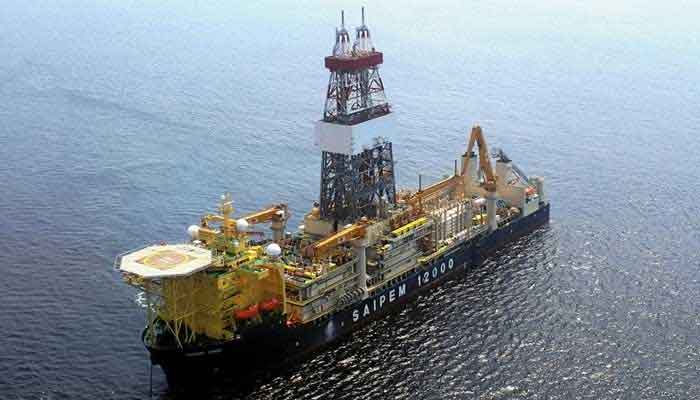Drilling at Kekra-1 under second side tracking halted
Highlights
- The drilling at Kekra-1 well in the country’s ultra-deep sea is facing the major threat of tide season
- It may mar the whole spudding process
- The drilling was initiated with 19 percent probabilities which according to the experts get reduced when side tracking starts taking place
ISLAMABAD: The ongoing drilling by Mobile Exxon with ENI as operator at Kekra-1 well in the country’s ultra-deep sea is facing the major threat of tide season which may mar the whole spudding process, as currently the second side tracking at the depth of 4,810 meters got stalled on April 8 and at this point cementing is being done.
Although this is not a good sign, but the cementation process of drilling will now be very slow, a relevant official told The News. The drilling was initiated with 19 percent probabilities which according to the experts get reduced when side tracking starts taking place. In Kekra-1 well case, second side tracking was underway. Officials said the when side tracking process is initiated, this means that first plan of drilling was not well worked out.
It is interesting to note that earlier when at Kekra well vertical drilling reached at depth of 4,799 meters on February 21, a high pressure was felt causing huge mud loss and because of unsafe operation the well was plugged by March 23. Then the first side tracking started and when it reached down to 3,100 meters, it again met failure which is why the hole was also blocked. After that second side tracking began.
According to experts, the side tracking means that the first plan to drill the well was not well thought out and worked out.
Under the new timeline, the drilling under second tracking is to go down up to 5,460 meters deep by April end and Pakistan top leadership, Prime Minister Imran Khan and his some cabinet members, are pinning high hopes on drilling for major oil and gas discovery, but under new scenario, the relevant official said the drilling process may further drag up to May because of ongoing cementation that has slowed down the drilling. But in May, tide season sets in which will be very harmful to drilling process.
Another top official confirmed to The News that the drilling got stopped at 4,810 meter depth and the status has changed from second side tracking to cementing.
However, GA Sabri, an expert of oil and gas exploration, who has also been secretary petroleum, also came up with cautious observation on the new development, saying that cementation which may continue for couple of days has stalled the drilling and after cementing process is completed, the drilling will start, but it will get slowed down.
He said the drilling need to go more deep by 700-800 meters, but the delay on account of cementation, spudding process may enter in the month of May which will be detrimental as in this month seas turns very rough.
Sabri also opined that because of changes in climate, tides season may hit earlier. Amid the rough sea, it will be harder for the operator to keep the drilling ship standing in the sea. The modern facilities have enabled the rig operators to continue work but again it depends upon the intensity of the tides. He said that it is the same depth when Total, a French company, abandoned drilling in 2004 here in G Bloc.
Exxon Mobile, OGDCL and Pakistan Petroleum Limited (PPL) are the sleeping partners of the joint venture. The spud drilling activities at Kekra-1 well was kicked off with $75-80 million by joint venture with 25 percent share each. Once the drilling turns a success story, then it will take five to six years to bring the oil and gas in the system of Pakistan. The gas price will not be less than over $10 per mmbtu as under current petroleum policy, the well head price in ultra-deep sea stands at $9 per mmbtu and when it reaches the system, after huge investment of $300 million, its cost will be even more than $10 per mmbtu.
Drilling at Kekra-1 under second side tracking halted
![]() Reviewed by Pak 24 News
on
April 12, 2019
Rating:
Reviewed by Pak 24 News
on
April 12, 2019
Rating:








No comments: